Luca Pacioli’s De Divina Proportione embodies the moment in the Italian Renaissance when art and science collided to spectacular effect. This book was written in 1497 at the court of Ludovico Sforza, Duke of Milan, who surrounded himself with the age’s greatest painters, architects and thinkers in order to make his court the greatest in Europe. He is most well known as an early patron to Leonardo da Vinci, who entered the Duke’s court in 1482. Among Leonardo’s many accomplishments while in Milan was his role in the reconstruction and decoration of Castello Sforzesco, the seat and residence of the Duchy of Milan where Sforza’s great court would blossom.
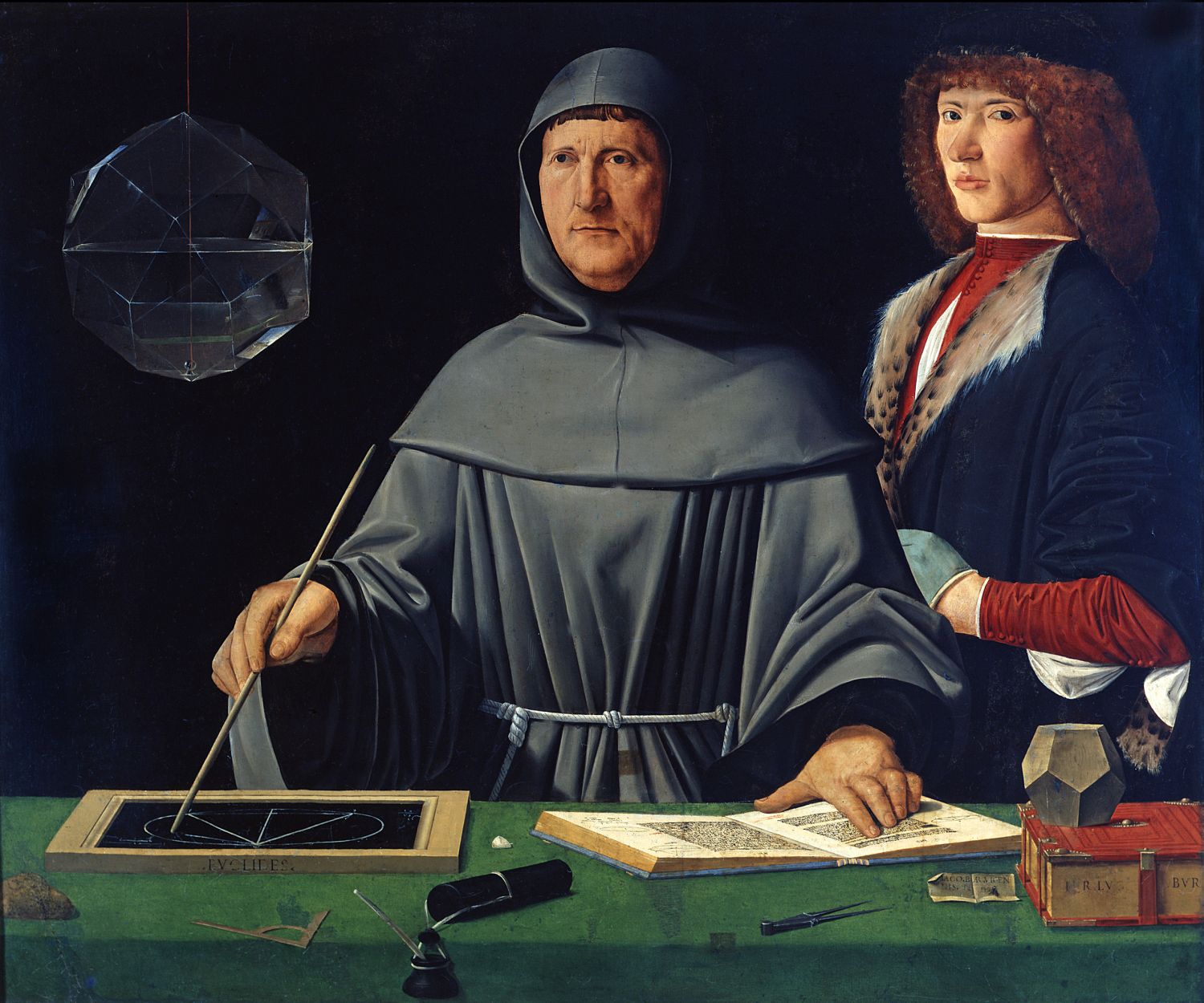
Pacioli, a mathematician and tutor originally from Tuscany, was invited by Sforza to join the court in 1496. By this time Pacioli had trained under artists and mathematicians such as Piero della Francesca and Leon Battista Alberti and taught mathematics at several of the ancient Italian universities. He published his first major work, Summa de arithmetica, geometria, proportioni et proportionalità (a textbook for use in the schools of Northern Italy), in 1494. Sforza had invited Pacioli to Milan to teach mathematics at his court, and it is here that two great minds of the Renaissance met.
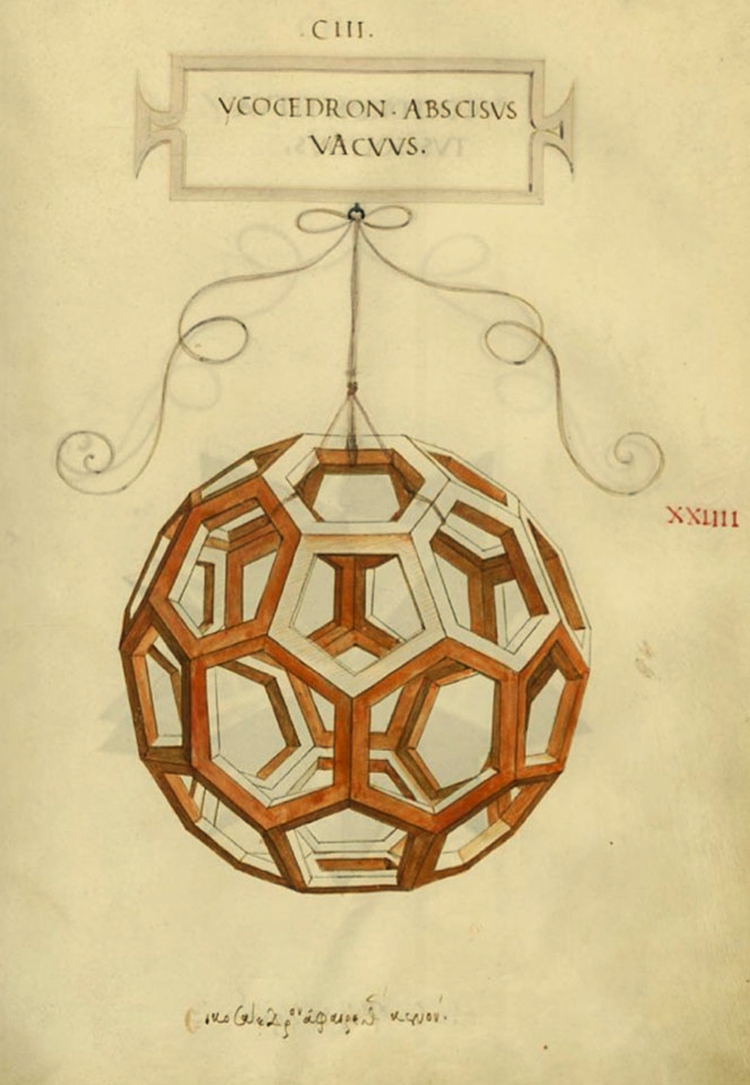
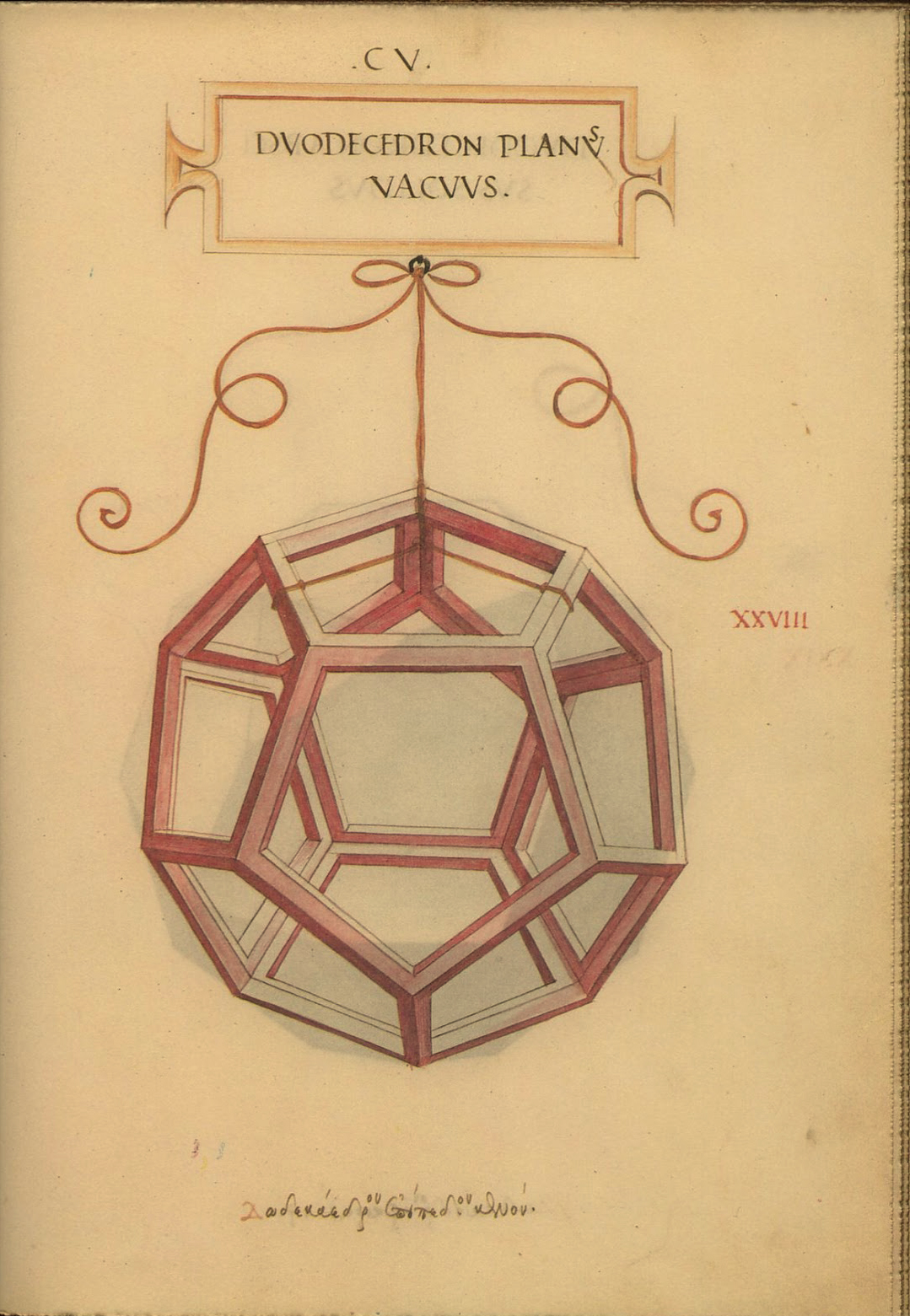
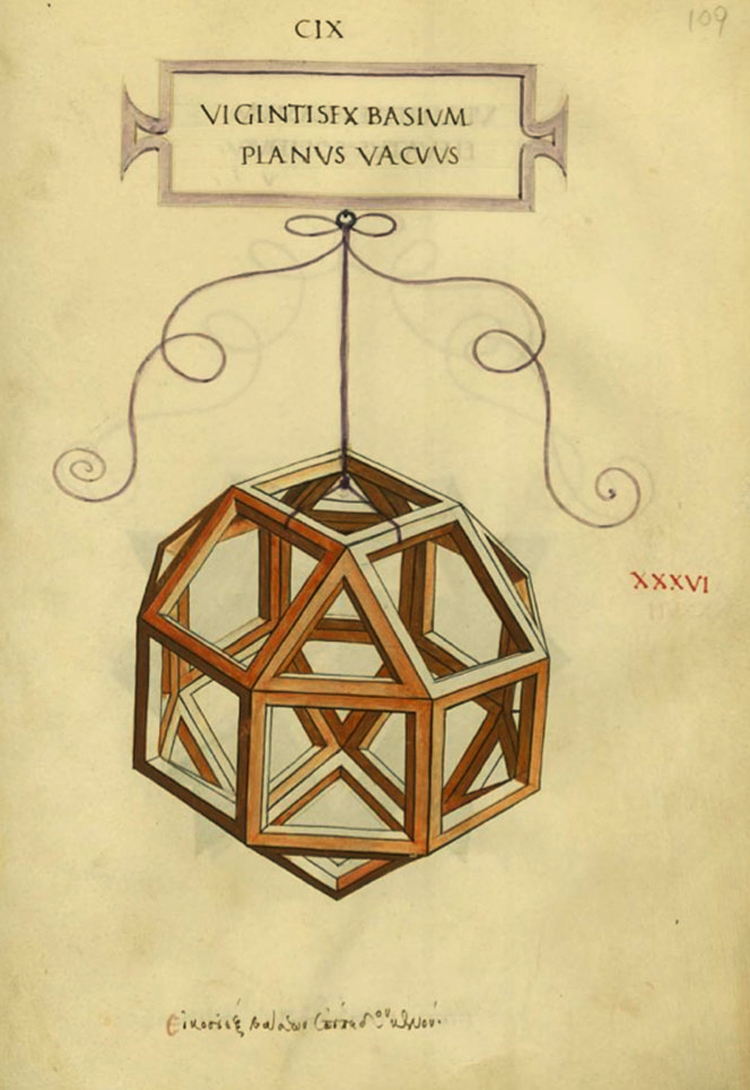
Pacioli and Leonardo quickly became close friends. Pacioli tutored the artist in Euclidian geometry and Leonardo impressed the mathematician with his ability to depict intricate geometric shapes as works of art. Pacioli spent much of his time in 1497 composing the text of Divina Proportione, which is an in depth study of the golden ratio, or ‘divine proportion’ [a : b = b : (a + b)], in geometry and art and which also detailed Euclid’s regular and semi-regular Platonic solids and concludes with a treatise on perspective and architecture. Pacioli’s text made the golden ratio central to the understanding of painting, sculpture, architecture, music, poetry and philosophy and was illustrated by models drawn by Leonardo, making Divina Proportione the only book illustrated by the artist in his lifetime. Two copies of this work survive, now kept at the Biblioteca Ambrosiana and the University Library of Geneva.
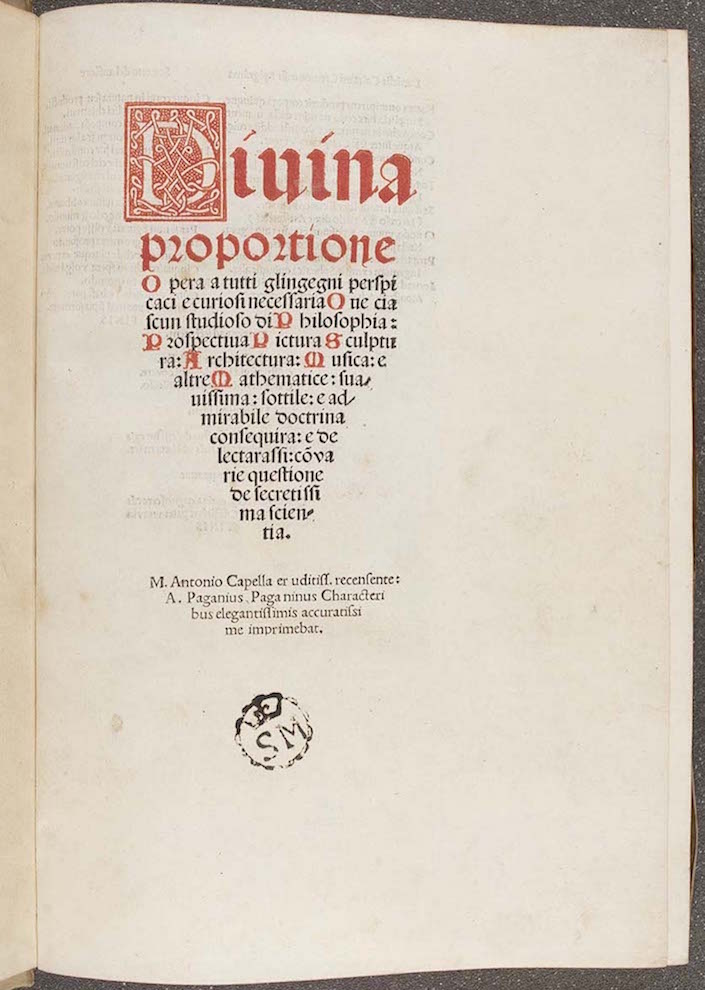
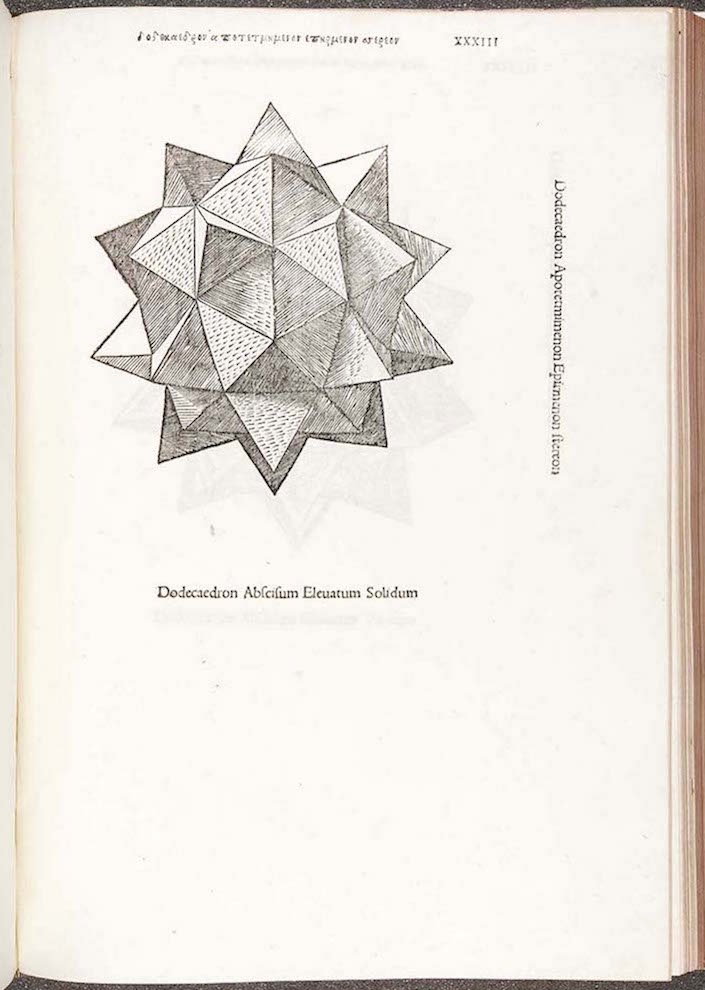
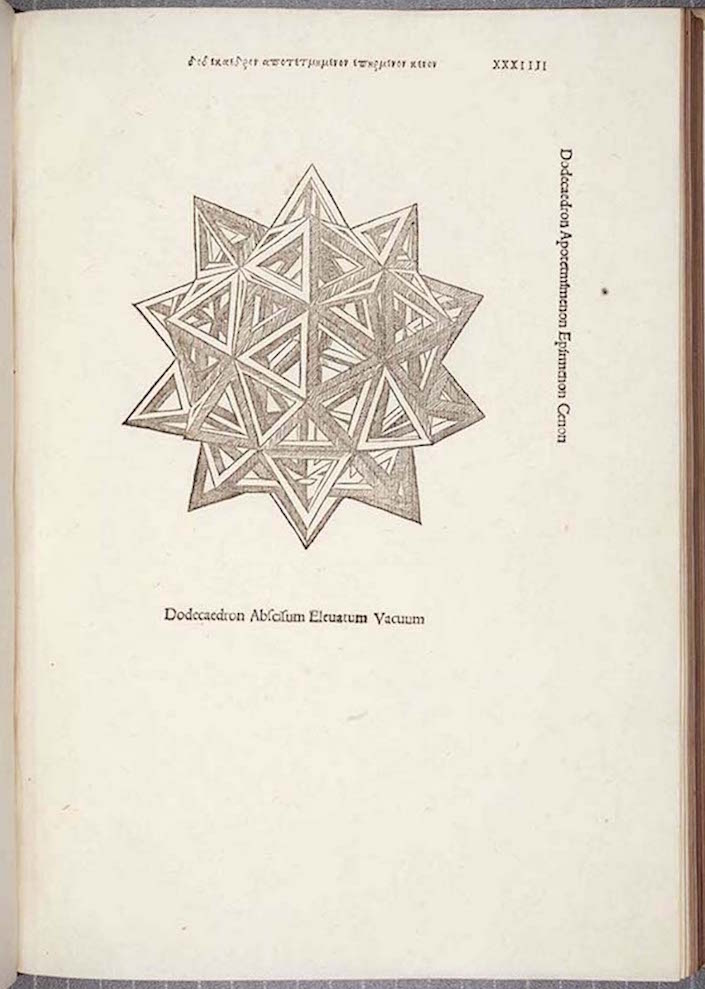
Both artist and mathematician were forced to flee Milan together in December of 1499, when Louis XII’s army invaded the Duchy. Pacioli and Leonardo first travelled to Mantua, then Venice and then finally Florence where the pair shared a house until 1506. In 1509, Pacioli returned to Venice to oversee the printing of both Divina Proportione and his Latin translation and commentary of Euclid’s Elements, both printed within weeks of each other in the early summer of that year. There is evidence that Pacioli and Leonardo continued to collaborate after 1509, evidenced in Pacioli’s manuscript of De Viribus Quantitatis which was never completed but related diagrams and notes are found also in Leonardo’s notebooks of the 16th century.
The printed Divina Proportione includes 59 leaves illustrated with full-page woodcuts of solid and open geometric forms after Leonardo da Vinci’s drawings done in 1497. It also includes a further 23 leaves of the geometrical shaping of Roman capital letters and the text is illustrated throughout with woodcuts of Pacioli’s theorems.
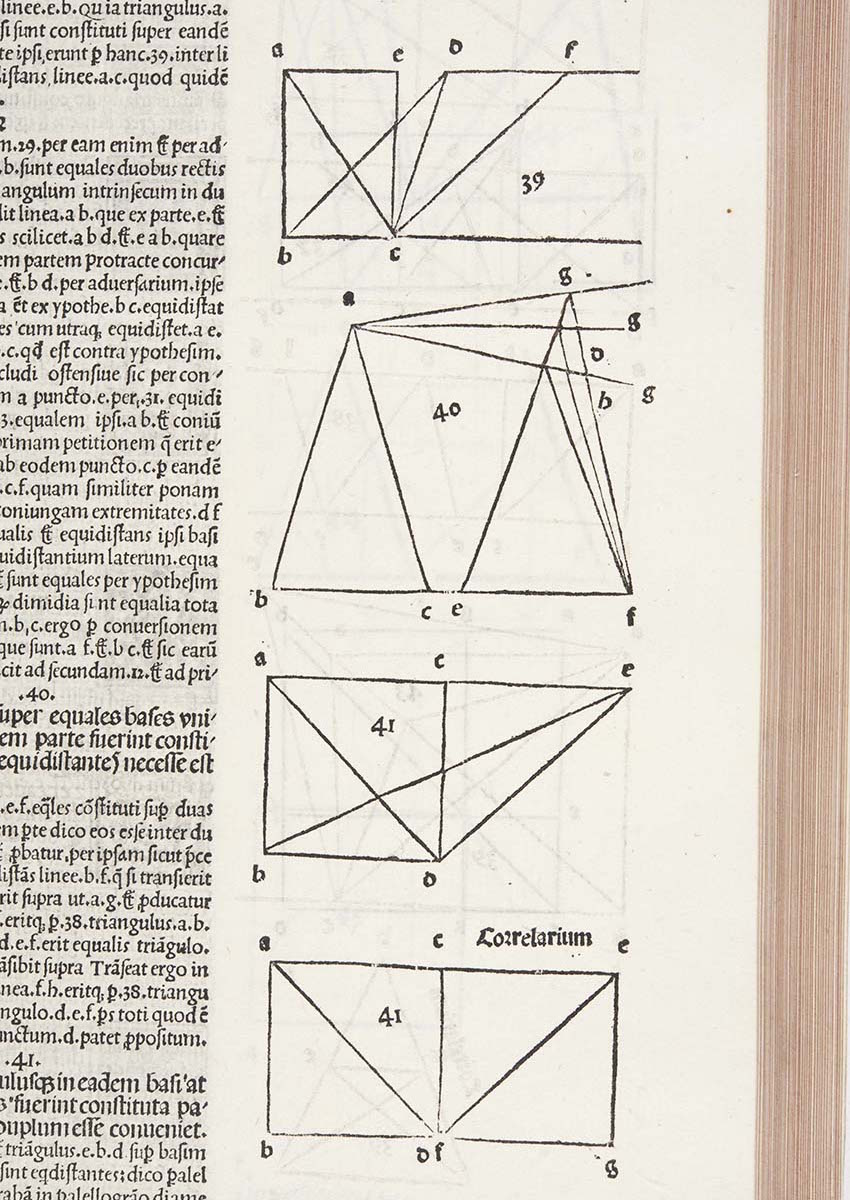
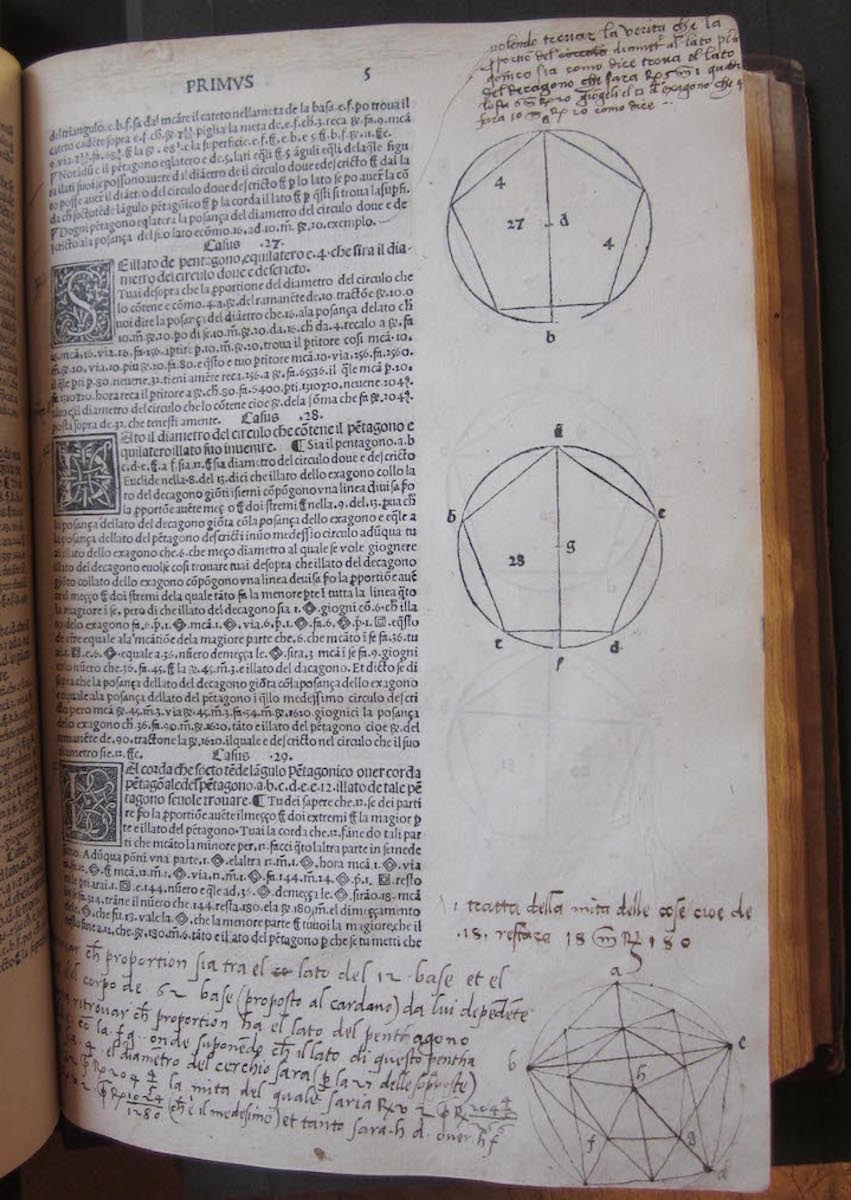
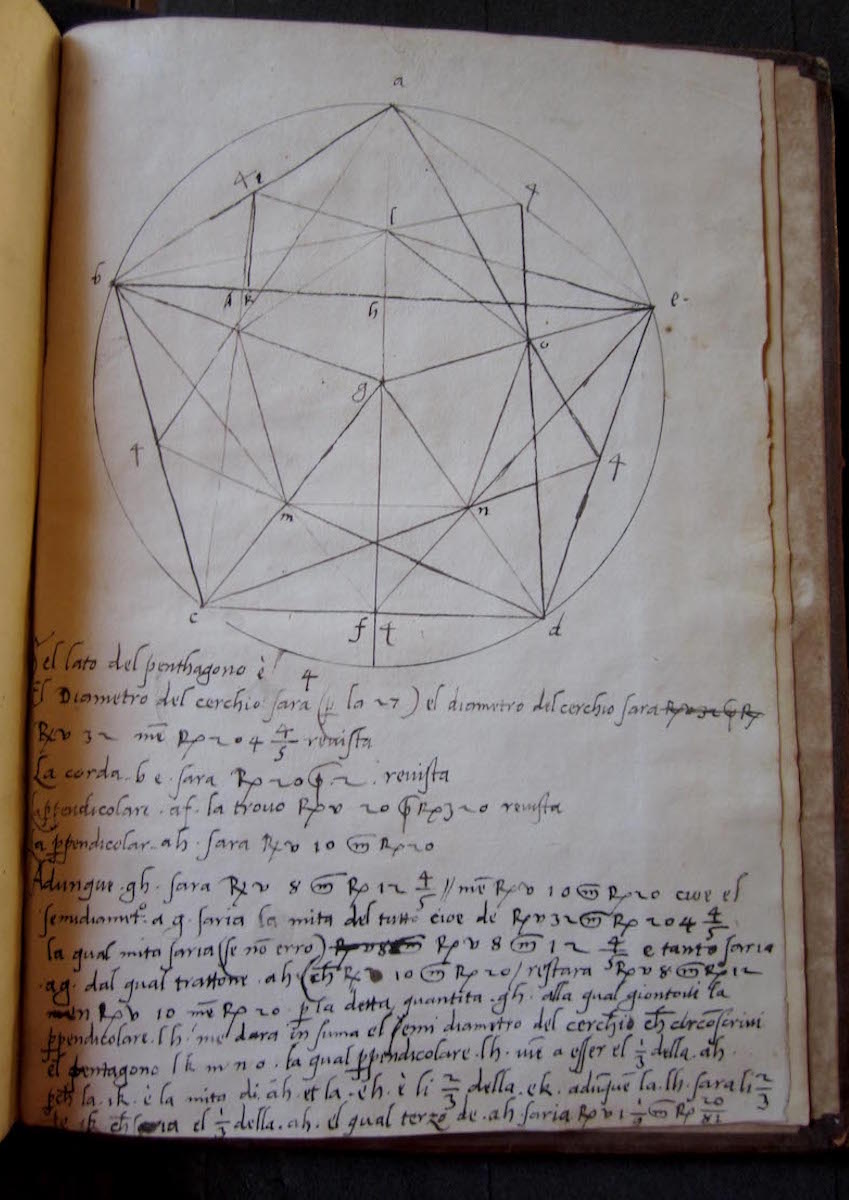
The two copies present here are indicative of the survival of Pacioli’s text. The copy at St Andrews comes from the library of Principal James David Forbes (1809-1868), a discerning collector of the greatest history of science texts, but with a keen eye for ‘clean’ copies. The Bodleian copy (Arch. B d.24) is on the opposite end of the spectrum in terms of usage: at least two Italian hands, mid- to late-16th century, interact with the text at various points, including working out theorems, drawing diagrams for confirmation and expansion of Pacioli’s geometry, and, after the series of woodcuts from Leonardo’s polyhedral, an attempt to draw out pentagons and tetrahedrons.
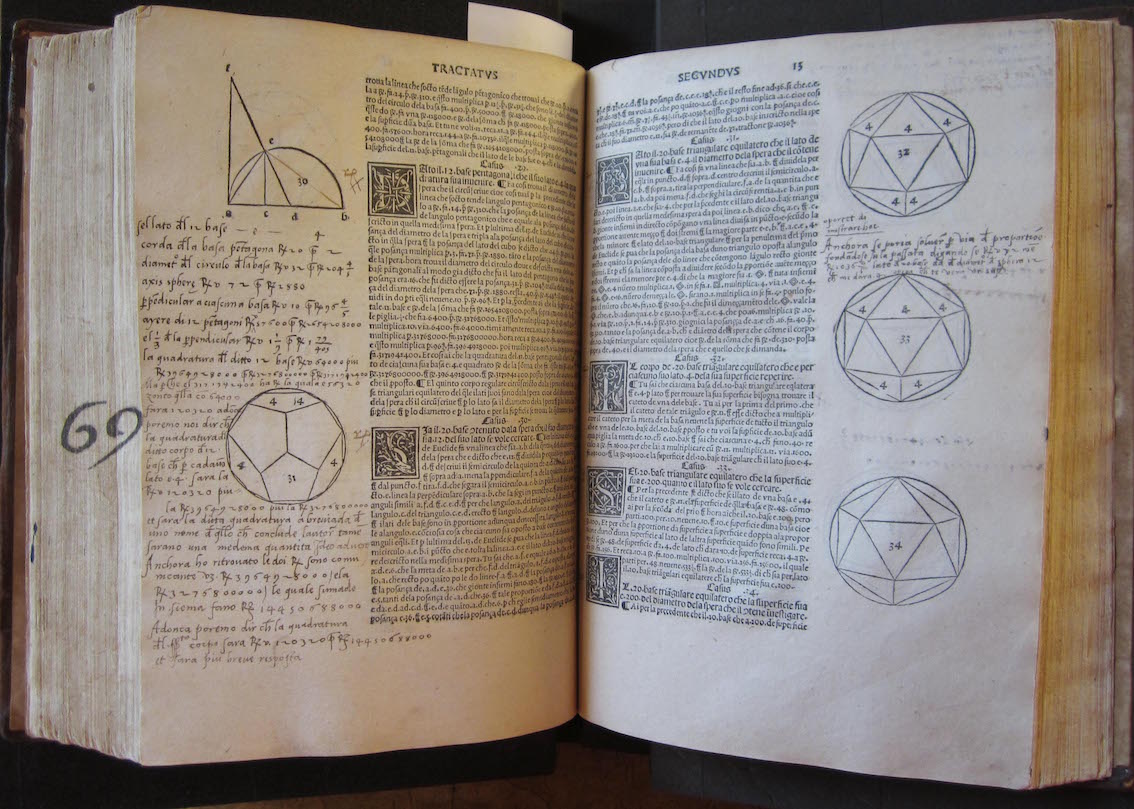
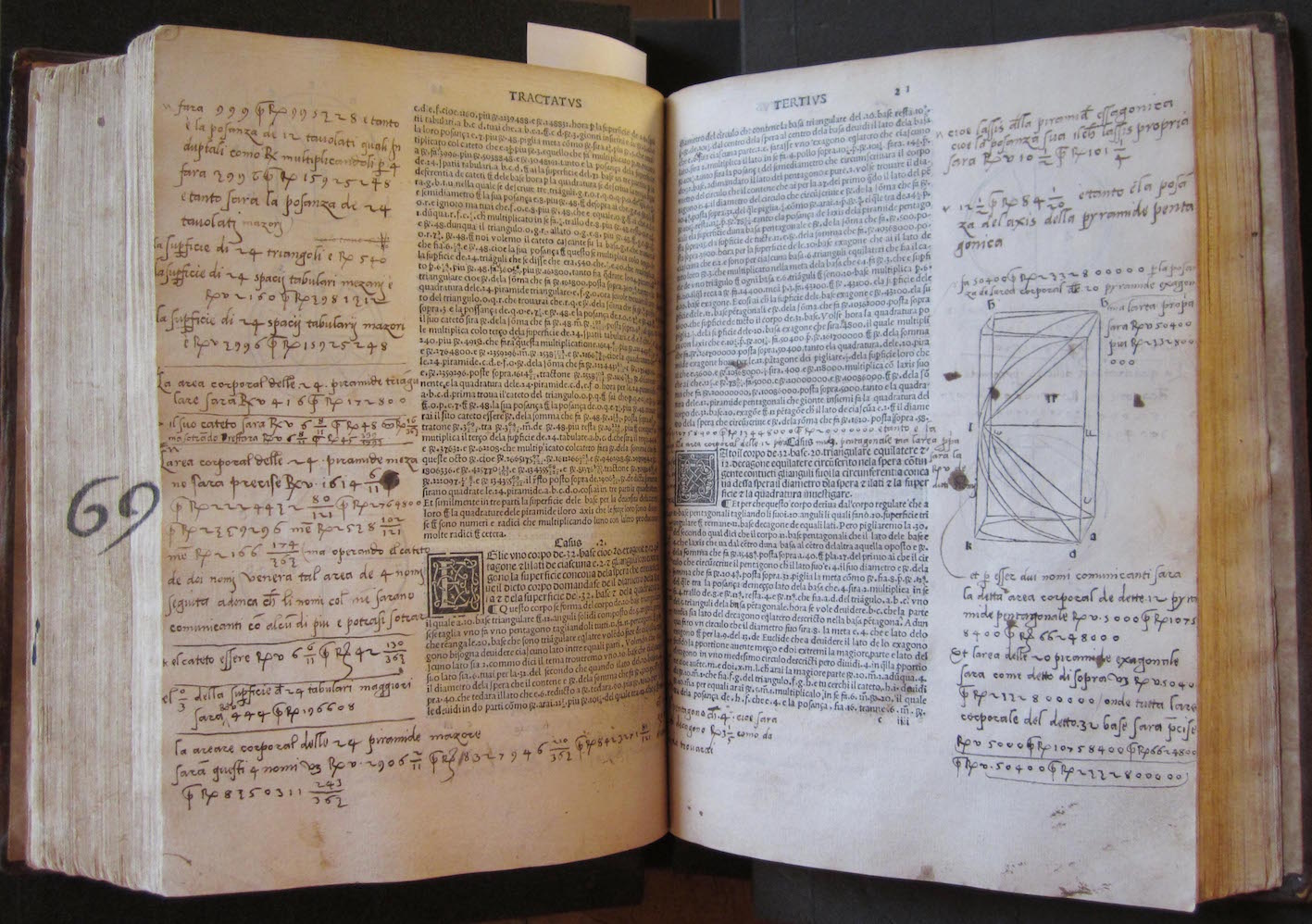
Divina Proportione is regularly found bound with a copy of Euclid’s Elements. In the case of the St Andrews’ copy it has been bound with Pacioli’s Latin translation of Euclid’s Elements, printed in the same year as the Divina Proportione; the Bodleian copy has been bound with the 1543 Venice edition of Euclid with Niccolò Tartaglia’s redaction. Both copies, here, present the two foundational texts for geometrical learning of the Renaissance: geometry in theory with Euclid, and geometry in practice with Pacioli.
More information:
Digitized copy at Biblioteca Digital Hispánica.
Huffman, Cynthia J. ‘Mathematical Treasure: Luca Pacioli’s Divina Proportione’.
J J O’Connor and E F Robertson ‘Luca Pacioli’ on MacTutor History of Mathematics.
